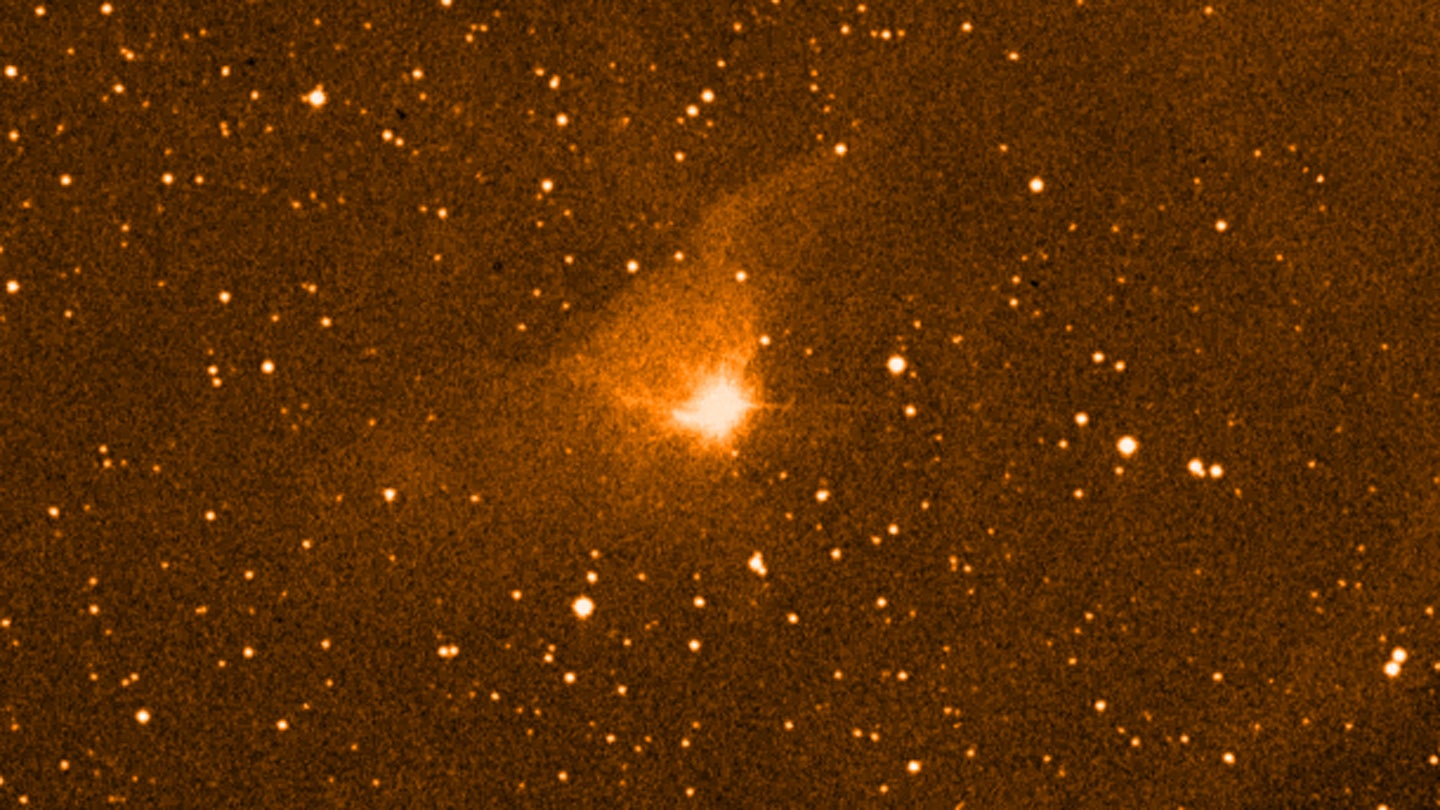
FU Orionis is the prototype of a class of novalike variables that undergo some of the most extreme variability seen in pre-main sequence stars. FU Orionis and its kin characteristically flare by several magnitudes over a period of one to 10 years before dimming slowly over 20 to 100 years. The underlying cause of these flare-ups remains unknown. One idea is that they are youthful stars like T Tauri (see #90) that suddenly accrete a lot of mass from its disk. Overloaded, the star material heats as it is being absorbed, resulting in the visible brightening.
FU Orionis itself burst onto the scene in 1936, rising from mid-16th magnitude by a factor of more than 100 in about 200 days. And it kept going: A year later, it had increased in brightness by nearly 7 magnitudes (to magnitude 9.6). An optical arc of reflection nebulosity accompanied the eruption and remains visible to this day. FU Orionis also undergoes small amplitude flickering (perhaps created by a jittering of magnetic jets), which may be the stellar version of “growing pains” that all T Tauri stars experience before settling down on the main sequence.
Astronomers remain keenly interested in FU Orionis and others in its class as these stars may provide insight into how stars evolve onto the main sequence and form planetary systems. Presently shining at 9th magnitude, FU Orionis is a great target for small telescope users, especially as it lies about 2° east-southeast of 4th-magnitude Phi2 (ϕ2) Orionis.









